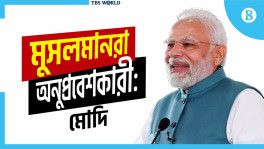Solar-device industry in Bangladesh: How artificial demand is impacting organic growth
Free distribution of solar-devices in the poorest off-grid regions of the country have brought lighting to millions of people who would have otherwise spent their lives in darkness, but the initiative may have also harmed the organic growth of the industry, distorted the market incentives of buyers and sellers, and in all likelihood led to inferior user-satisfaction outcome

At the turn of the century, access to grid-electricity in Bangladesh was a low 36 percent. Most of the people were living their lives in darkness in the off-grid areas of the country. Since the national grid was not extensive enough, efforts were made to bring electrification to the people living in the off-grid areas using renewable energy.
Among numerous other initiatives, the use of solar home systems – small solar devices that run 2-3 devices such as light-bulbs and fans – was explored. The initiative proved immensely successful.
Since the initiation of the programme in 2003, some 4.5 million units have been installed in the country (5.8 million including installations outside the programme), bringing lighting to more than 20 million people, almost 12.5% of the population.

The financier of the programme, Idcol – a public institution, and their many partner organisations (Grameen Shakti, Brac, etc.) have won numerous recognitions and international awards for turning the programme into the fastest growing solar-electrification programme in the world during its heydays.
Their success has created a burgeoning solar-products manufacturing and assembly industry in Bangladesh, creating jobs, stimulating the economy, and transforming the lives of millions of users.
But these are just boiler-plate information. They tell only half the tale of Bangladesh's fascination with small solar devices – a relationship that is sometimes empowering and sometimes stifling.
Creating the market
Back in 2003, the market for small solar-devices was not underserved in Bangladesh – it simply did not exist. No one knew what solar-PV technology was and no one trusted it. The aim in the first few years of the programme was to first create the market.
Solar electrification was new and mysterious. If one device malfunctioned, the fallout would not be one unsatisfied customer; it would be an entire neighborhood or a village that would then shun solar-devices. Therefore, in the initial years, creating a market entailed massive publicity and awareness raising campaigns, of course, but also providing unparalleled quality-control and after-sales services for the devices.
It is also important to keep in mind that the target customers were not financially well-off people. A 40Wp system that could support few lights and one black and white TV would cost about $350 back then: a considerable sum, even for a middle-class family. A smaller 20Wp system valued at over $100 was still too expensive for the target customers. There was need for financing and various international organisations such as the World Bank, ADB, IsDB, KfW, JICA, etc. helped finance the programme.
This helped lower the price of the devices for the customers in the initial years, but also meant that the solar-programme was only serving an artificial market. Record numbers of units were being sold every year, and growth was exponential, but it was obvious that without financing, a viable organic market did not yet exist.
An artificial, catered-for, market had been created. The next challenge, therefore, was to create an organic market.
Going from an artificial market to an organic market
In 2013, almost one million solar home systems were installed in Bangladesh. Three years later, the market for Idcol and their partner organisations had all but disappeared. But in an ironic twist of fate, this collapse of the Idcol solar-programme is an indication of the overwhelming success of the programme in developing a market for small solar-devices in Bangladesh.
Once the programme was able to create awareness and trust among the people through immaculate quality control, and solar devices became well-known and sought after in off-grid areas, other private sellers entered the market. Some of them set up manufacturing and assembly plants locally.
They offered the customers greater options and flexibility in models and payment options. Because of their hard-work in laying the groundwork, the highly leveraged solar-programme of Idcol could no longer compete with these private sellers.
Nonetheless, this was the beginning of a private and organic market for solar-devices developing and taking shape in Bangladesh, fueled not by international donor funds but by the entrepreneurial spirits of ordinary Bangladeshis. But it was still a sunrise industry.
The next challenge was to find a way for the authorities to nurture this industry, help it mature and continue growing.
Back to an artificial market again
There were numerous ways in which this market could have been encouraged. Lowering or removal of tax on imported solar components, for example, could have been one such step taken. But something else was done. Instead of removing interventions from the market, an additional intervention was introduced.
Food for Work and Test Relief are two of the largest social safety net programmes in Bangladesh, designed to ensure food for the poorest people, to create jobs, and develop rural infrastructure. In late 2015, the government decided that from then onwards, half of the fund of the two programmes would be used for providing solar home systems and other small solar-devices for free to marginalised communities.
Around 300,000 solar-devices were distributed in the country in the first two years of the initiative and the numbers have only increased since.
This guaranteed (but artificial) demand seems good at first glance – it adds demand to the industry and makes the market more robust. However, it is also possible that this initiative has adversely affected the organic growth of the industry.
At the macro-level, this interference has distorted the market, not to mention that these 'free' solar-devices are not really free but paid by the government from their revenue. However, the larger issues are at the micro-level.
Under the initial solar programme, or during the organic growth stage of the market, when one family bought a solar-device and enjoyed all the benefits, the aspirations of their neighbors would have been to purchase a device of their own. There was a snowball effect at play, with one purchase leading to numerous other purchases – an instance of market growth.
However, when a solar-device is given for free to a family, the aspirations of the neighbors may be limited to petitioning local leaders to receive a solar-device in the next round of distribution. They no longer want to buy 'free' solar-devices. Distribution of one free device may be leading to the loss of potential purchases of numerous other devices – an instance of market contraction.
In addition, it is not known if the recipients are taking proper care of devices that they have not had to pay for. If a technical issue does arise with the devices, due to faulty parts, negligence of the recipients, or any other reason, it is difficult to gauge what type of after-sales services are provided.
Free distribution of solar-devices in the poorest off-grid regions of the country have brought lighting to millions of people who would have otherwise spent their lives in darkness, but the initiative may have also harmed the organic growth of the industry, distorted the market incentives of buyers and sellers, and in all likelihood led to inferior user-satisfaction outcome.
The next challenge, therefore, is to devise a strategy that will allow both access to solar-electrification for the poorest people while also ensuring organic growth of the industry.
Solar-electrification has come a long-way in Bangladesh in the last two-decades. This progress has been driven by both public and private initiatives. The deep enthusiasm Bangladesh has for solar-electrification has led us to creating the world's fastest growing solar programme, including solar-electrification objectives in the largest safety-net programmes, and bringing transformative changes to the lives of millions of families.
The next step, whatever it may be and whenever it may come, promises to be yet another interesting development in this industry that holds so much promise for the future of Bangladesh.
Ahsan Senan is a lecturer of economics at Brac University.
Disclaimer: The views and opinions expressed in this article are those of the author and do not necessarily reflect the opinions and views of The Business Standard.


 Keep updated, follow The Business Standard's Google news channel
Keep updated, follow The Business Standard's Google news channel
















